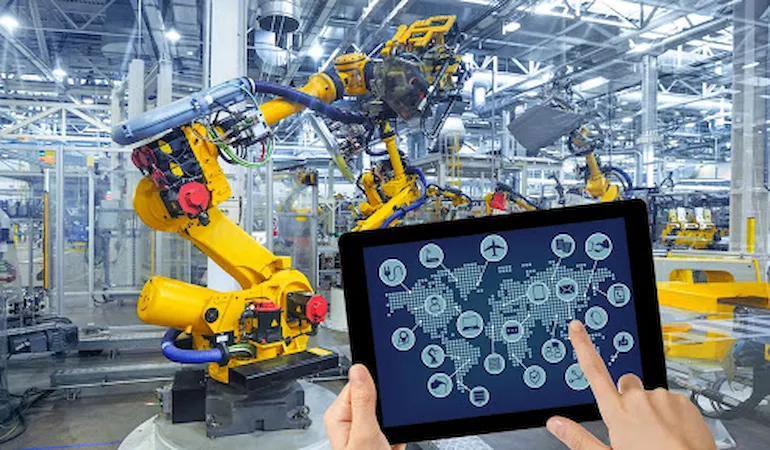Industrial Automation

Industrial automation involves the use of control systems, such as programmable logic controllers (PLCs), supervisory control and data acquisition (SCADA) systems, and distributed control systems (DCS), to monitor and control industrial processes. These systems utilize sensors, actuators, and other devices to collect data, perform complex algorithms, and execute precise control actions. By automating tasks, industries can improve efficiency, reduce labor costs, and enhance product quality. For instance, in manufacturing, automation can optimize production workflows, predict maintenance needs, and detect anomalies in real-time. Additionally, industrial automation enables remote monitoring and control, allowing operators to supervise and adjust processes from a central location, reducing the need for physical presence on the plant floor.
The integration of emerging technologies like artificial intelligence (AI), machine learning (ML), and the Internet of Things (IoT) is revolutionizing industrial automation. These advancements enable predictive analytics, allowing systems to forecast equipment failures, optimize energy consumption, and identify opportunities for process improvement. Moreover, the use of robotics and machine vision enables flexible and adaptive manufacturing, permitting rapid reconfiguration of production lines to accommodate changing product demands. Industrial automation also facilitates the development of “smart factories,” where data-driven decision-making and seamless communication between devices and systems create a highly efficient and responsive production environment. As industries continue to adopt and innovate automation technologies, they can expect significant gains in productivity, competitiveness, and sustainability.
